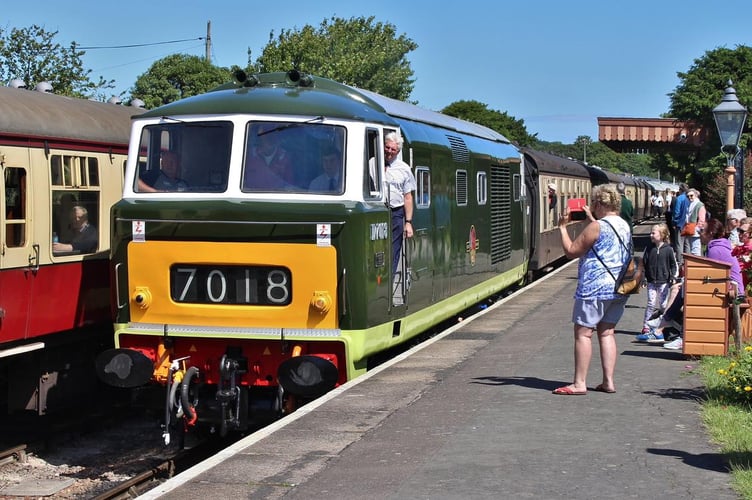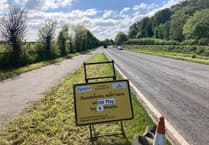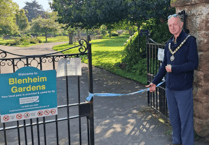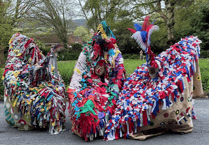THOUSANDS of visitors were attracted to West Somerset last week on the hottest days of the year so far to enjoy a festival of diesel trains.
The West Somerset Railway’s (WSR) three-day summer diesel gala proved a huge success despite the last-minute loss of one of its locomotives.
But even without D7018 the railway managed to haul every service which had been scheduled for the event.
D7018 had to be withdrawn when a number of faults were found during tests and could not be overcome despite frantic efforts by the Williton-based Diesel and Electric Preservation Group (DEPG).
It was found that the gearbox was not taking command from the cab controls so the driver was unable to change direction, and there was a lack of power command from one cab meaning the driver was not able to accelerate the engine while driving.
However, all four visiting locomotives took part while the D7017 operated for the entire gala and the hydraulic Hymek was also in action.
D7018 was put on display in the DEPG’s Williton yard together with D1010 ‘Western Campaigner’, which was being overhauled.
The four guest locomotives helped to provide a feast of diesel superpower for local residents and visitors alike.

They were the East Coast Deltic legend Alycidon, Dependable Class 25 D7659, Southern Sulzer Class 33 33002 ‘Sea King’, and the teddy bear Class 14 D9551.
The WSR thanked, respectively, the Deltic Preservation Society, Waterman Railway Heritage Trust, South Devon Diesel Traction, and Severn Valley Railway Class 14 Co Ltd, for their loans.
The DEPG workshops were open for all three days of the event, and the WSR’s extensive home fleet of hydraulic and sulzer powered engines were all in use in a high-mileage timetable on the 23-mile track between Minehead and Bishops Lydeard.
To add variety to the attraction of the gala, the WSR ran single-headed, double-headed, and triple-headed Class 33 trains.
Some of the double-header trains were run in ‘multiple’, meaning the leading driver had control of both locomotives through one set of controls, a ‘first’ for the WSR’s passenger trains.




